Iron is one of the most important elements in the human body. It directly participates in the process of blood formation, on which human life depends. The lack of iron can cause many problems in the body. The low amount of red blood cells that transmit oxygen molecules throughout the body can cause oxygen starvation. It leads to the death of cells, general ailment, worsening of the brain. Iron deficiency anemia is the majority of anemia of both adults and children. We will tell you about what iron deficiency anemia and how to deal with this disease.
Content
- Symptoms of iron deficiency anemia
- Diagnosis of iron deficiency anemia
- Degree of iron deficiency anemia in the body
- Iron deficiency anemia: causes
- Iron deficiency anemia in children
- Iron deficiency anemia in pregnant women
- Treatment of iron deficiency anemia
- Diet for iron deficiency anemia
- Iron deficiency anemia: video
Symptoms of iron deficiency anemia
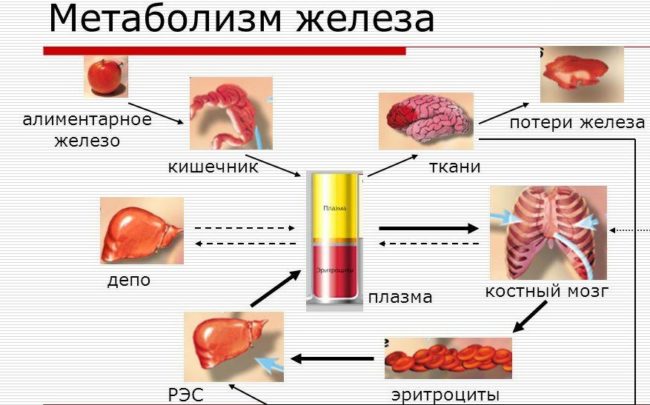
This disease does not have its specific symptoms, therefore it is very difficult to diagnose. It is possible to identify it with a hundred percent result only after passing a general blood test. In humans with iron deficiency anemia, the hemoglobin indicator is much lower than normal. The difference between the lower boundary of the norm and the actual indicator shows the degree of anemia.
However, in addition to blood tests, there are several symptoms that will help to suspect the presence of a problem. The signs of iron deficiency anemia include:
- Dryness of the skin and its pale color.
- The brittleness and layer of nails, as well as a change in their shape.
- Slow down hair growth, as well as a decrease in their fortress. Serving tips and a large rest of the hair on a comb - should give an occasion to think.
- Fast fatigue even in the morning, asthenia, weakness.
- Violation of taste.
- "Doors" in the corners of the mouth.
- Headaches, ears, tachycardia.
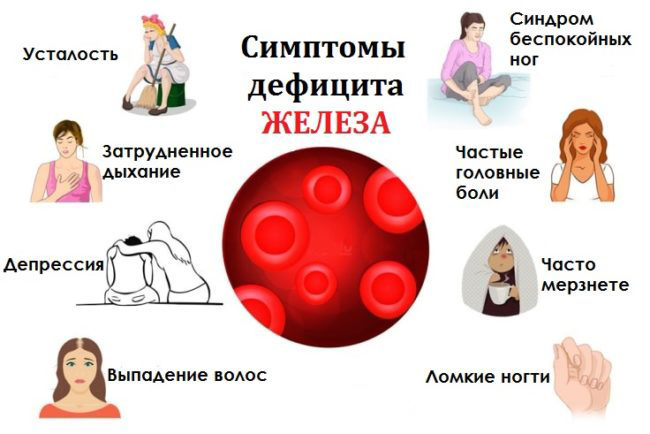
The manifestation of these symptoms is a consequence of brain hypoxia, which leads to disorders in the work of the central nervous system.
If there are such signs of the disease, you should not delay the solution of the issue, but immediately consult a doctor.
Diagnosis of iron deficiency anemia

In case of suspicion of problems, the patient is mandatory prescribed a general blood test in which the level of hemoglobin is the main indicator for the diagnosis of iron deficiency anemia. For adults, it is in the range from 120 to 130 g/l.
With a low level of hemoglobin with iron deficiency anemia, a more detailed complex is prescribed with the following indicators:
- The number of red blood cells.
- Ferritin.
- Transferrin.
- The content of hemoglobin in red blood cells and the concentration of hemoglobin in red blood cells.
- Iron binding of blood serum.
In case of iron deficiency anemia, all indicators, except for the latter, are significantly reduced.
Diagnosis code w elelet anemia in ICD-10-D50.9.
Degree of iron deficiency anemia in the body

This disease does not develop lightning speed. It goes from one state to another, passing several stages:
- At the first stage, the body begins to experience a lack of iron, by reducing its receipt and increasing consumption. This drawback is covered with iron reserves in tissues. This stage of iron deficiency is called preletent. Basically, the first stage is not diagnosed, since it does not have specific features.
- If you do not take any steps, the second stage of iron deficiency is developing - latent. In the patient’s blood analysis, specific signs can be detected - a decrease in ferritin and transfer. However, the hemoglobin indicator can be in acceptable boundaries.
- The last stage of iron deficiency is iron deficiency anemia. With it, iron stocks in tissues cannot compensate for its deficiency. Along with a decrease in ferritin and transferrin in the blood test with iron deficiency anemia, a decrease in hemoglobin indicator is observed.
Iron deficiency anemia: causes
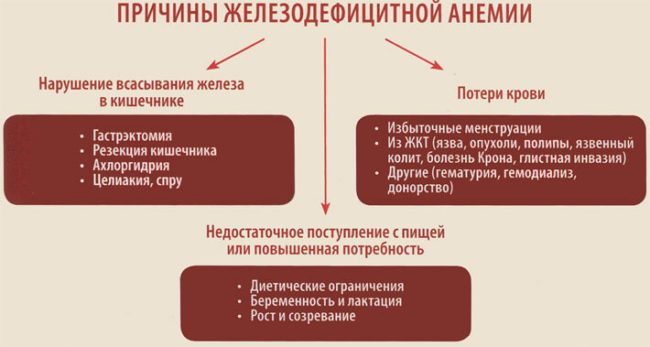
The main reasons for the diagnosis of iron deficiency anemia are:
- Liver diseases. It is in it that transferrin synthesis occurs.
- Diseases of the gastrointestinal tract, which lead to impaired iron absorption.
- Congenital iron deficiency due to the problems of the mother during pregnancy or during premature birth.
- Oncological diseases.
- Extensive blood loss for injuries and internal bleeding.
- Insufficient nutrition and increased need for iron.
Iron deficiency anemia in children
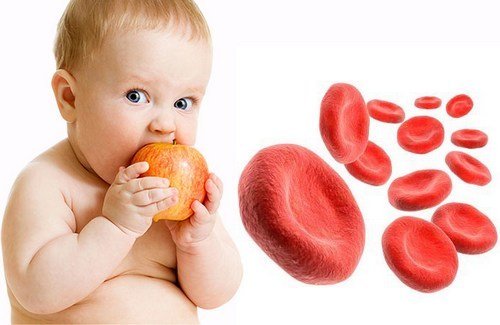
Basically, the disease of iron deficiency anemia in children becomes a result of rapid growth of the body with a simultaneous lack of iron in it. The fact is that the hematopoietic system at an early age is still imperfect and therefore is vulnerable to external irritating factors.
- This phenomenon can be observed during the restructuring of the hormonal background during puberty. This is especially true for girls who in this period begins the menstrual cycle, which is associated with large blood loss.
- It is also worth noting malnutrition. It is very difficult to make a child, especially in adolescence. But at the same time, energy consumption, and with it, iron in a growing and active organism, is very high.
- Separately, it is worth noting diseases that can lead to iron deficiency anemia. These are mainly diseases of the gastrointestinal tract, liver, bone marrow oncology.
- One of the causes of the lack of iron in young children is the presence of parasites that can cause the body to obtain an insufficient amount of this element with their life.
- An even cause of anemia may be an injury associated with vast blood loss, which happens in children very often.
Iron deficiency anemia in pregnant women
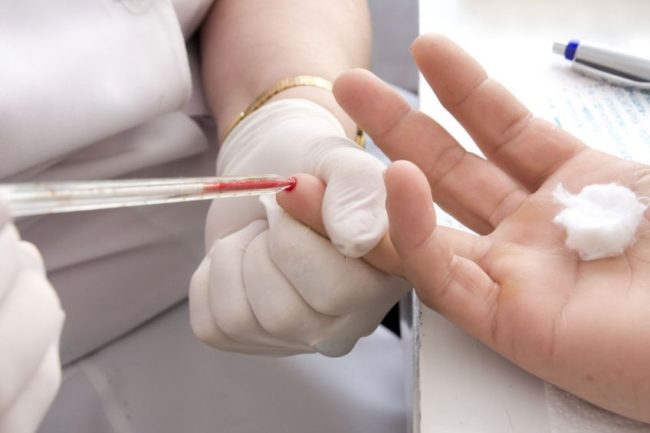
Women are much more likely to suffer from this ailment than men. This is due to the characteristics of the female body. Unregular and abundant menstruation can cause increased decompensated iron deficiency in the body.
Also, a drop in the level of this element can be observed during pregnancy and lactation. Especially in the second and third trimester of pregnancy, when the fetal growth occurs. During gestation to the content of hemoglobin in the blood, it should be taken very carefully. Iron deficiency anemia in pregnant women can provoke a fetal hypoxia with very sad consequences, so observation of the blood condition is constantly carried out.
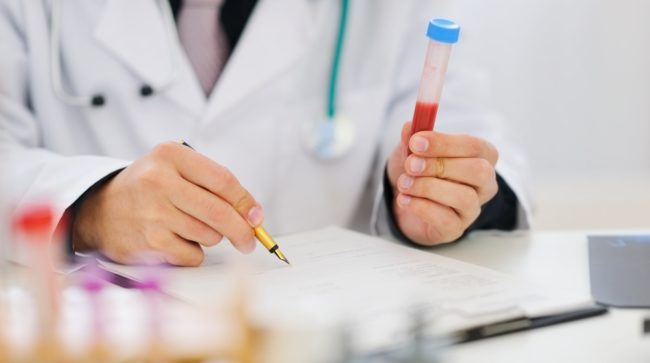
Treatment of iron deficiency anemia

Treatment of iron deficiency in the body depends on its stage. So, a prelaterate form can be treated with power correction, daily mode, dosing of physical and nerve loads. In the event of a latent form, when the problem is already noticeable in the results of the analyzes, the situation cannot be corrected by diets and regime of the day. In this case, they take biological supplements that contain a lot of iron and vitamin complexes. These drugs are based on organic iron salts, such as fumarat, gluconate and bisglicinate, as well as additives that help the gland be absorbed in the body.
In addition, they use products that are enriched with iron salts. These are hematogen, brewer's yeast, etc.
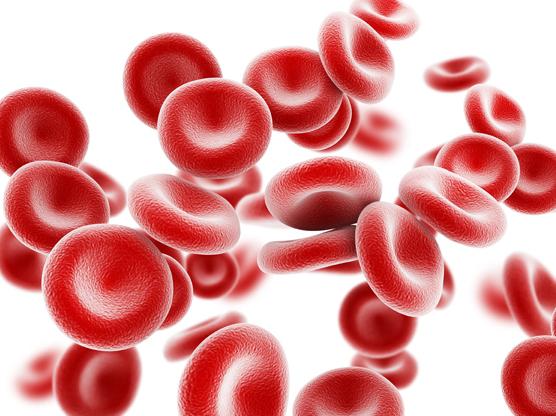
In complex forms, drugs are connected with iron deficiency anemia.
- Hemofer Prolongatum. Take half an hour before meals or two hours after, be sure to washed down with a large amount of water. The break between taking the dose of the drug should be at least 6 hours. Otherwise, the intestine will not be able to process a new amount, and it will be lost. The average daily dosage is 3 mg per kilogram of weight.
- Sorbifer Durules. It is taken half an hour before meals, drinking abundantly with water. Dosage for adults - no more than 2 tablets per day. Children and pregnant women - 1 tablet.
- Ferro-Folamma. It is taken 1-2 capsule a day 30 minutes before meals.
- Ferrum Lek is a solution for injection. It is used in complex cases of anemia droppically slowly on a solution of sodium chloride in a proportion of 1:20. This procedure can be carried out only in a hospital under the supervision of a specialist, since the incorrectly accepted dosage can lead to poor consequences.
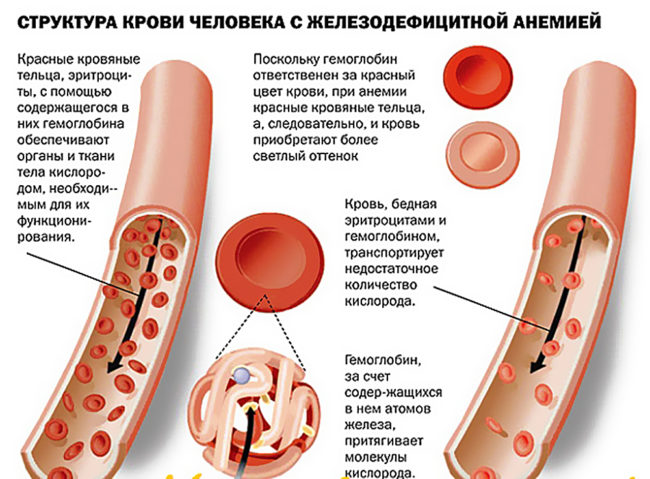
With anemia, the degree of which threatens the patient's life, a donor blood transfusion is carried out.
Diet for iron deficiency anemia
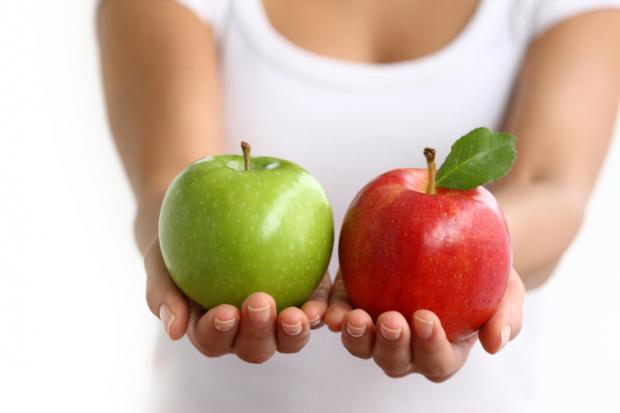
Consider what nutrition should be with iron deficiency anemia.
Some useful products should be included in the diet:
- Meat products (beef and poultry meat). They contain healthy protein and iron.
- Beef, pork, chicken liver. 100 g of this product contains 20 mg of iron.
- Oatmeal. It contains many nutrients, including the iron necessary for the prevention of iron deficiency anemia.
- Blackberry. It contains quite a lot of such minerals as magnesium, phosphorus, nickel, iron, manganese, chrome and potassium. In addition, nutrients such as apple, citric, wine acid are concentrated here. This berry has a lot of sucrose, fiber, fructose and glucose. If you use blackberries every day, it helps to strengthen the body and saturate it with useful vitamins and elements.
- Pomegranate. It contains a considerable amount of iron, which is very well absorbed by the body. Therefore, pomegranate juice is prescribed with a reduced value of the level of hemoglobin, as well as with general exhaustion. In particular, it is useful to women after childbirth.
- Dogwood. It is able to tone the body. Therefore, it is recommended to include in food to patients with blood diseases, for example, anemia and anemia, as well as with other ailments with the circulatory system. This fetus has one very useful property - to increase the level of blood hemoglobin and normalize blood pressure. In order for the benefits of the berries to be maximum, it is customary to collect them in late autumn.
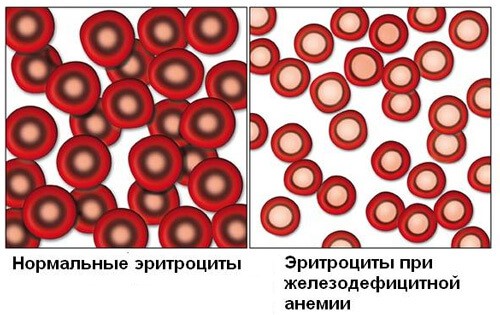
- Spinach. It is useful for children and adolescents. Spinach helps to cope with colds, strengthens the vessels, retina of the eye, and also increases the level of hemoglobin in the blood.
- Chickpeas. It helps to maintain the required amount of iron in the body. Therefore, it is useful for people with chronic iron deficiency anemia. It is simply necessary for pregnant women and nursing mothers. In addition, chickpeas regulates blood sugar and the output of poor cholesterol.
- Beets, beet juice. Fresh beets contain a lot of antioxidants. Thanks to these wonderful properties, it can be used as a means of preventing oncological diseases and anemia. In addition, the beneficial substances that are contained in beets help maintain the body system systems, contribute to the general rejuvenation of the whole organism. This juice helps to strengthen the nervous system, especially for problems with sleep and neurosis.
- Honey. This product is recommended for iron deficiency anemia so that the iron is as best as possible in the body.
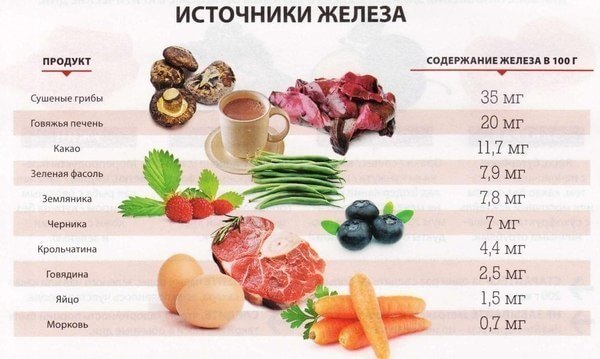
It is worth excluding the following products from your everyday diet:
- Flour products, butter pastries. They contain elements that prevent the absorption of iron in the body.
- Alcoholic drinks. They are contraindicated not only with anemia, but also with other diseases of the circulatory system.
- Banans. It is better not to include in their diet to people suffering from such serious diseases as coronary heart disease, thrombophlebitis, increased hemoglobin levels, as well as people with diabetes. Patients who have excess body weight should limit their consumption.
- Black pepper. The use of black pepper helps to accelerate the absorption of the nutrients of food and medicine. It contains an alkaloid piperin, which, having entered the body, improves the digestibility of food when it passes through the intestines. At the same time, the penetration of amino acids through the walls of the intestine improves. However, the use of black pepper in food helps to reduce hemoglobin levels, which makes blood more liquid. Due to this, the load on the heart muscle decreases. Therefore, the risk of heart attack and stroke is reduced. But for the same reason, it is not recommended to include in the diet to those people who, on the contrary, have a very low hemoglobin level.
- Walnuts. They are harmful in acute intestinal diseases, with enterocolitis, in chronic colitis, as well as with an increased level of hemoglobin.









Comments
a couple of years ago, there was no side of metrogils from the same problem, there were no side effects ...
I’m not a fan of peeling at all, it saves from acne of metrogil, it also smoothes it ...
Great article! ...
I take the second course of the Capsules Climafite 911. The tides went very quickly. It became calmer, irritability went away and I sleep well ...
i also noticed - it is worth nervous, everything immediately affects the face. Therefore, I try to avoid conflicts and unpleasant people. Of the creams, I like Miaflow from wrinkles - smoothes not only small wrinkles ...